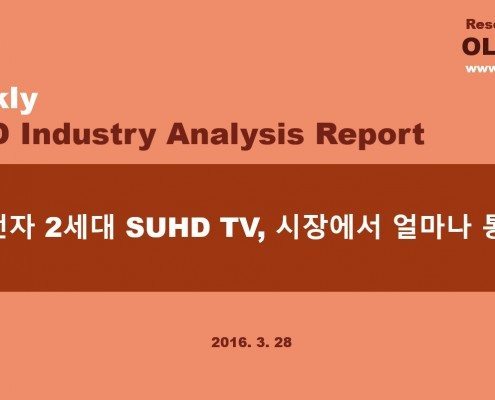LG Electronics, “Sales of the Premium TV in 2017 would hold 60%”

LG Electronics spoke that “The portion of premium TVs in total TV sales will be increased from about 40% in 2016 to around 50% in first half of 2017 and up to 60% in the end of this year.” at the conference call in Q2 2017, which was held on 27th.
The performance in Q2 for HE area of LG Electronics showed 4 trillion and 234.9 billion won in sales, and 343 billion won in operating profit. The QOQ on sales was declined to 2.1%, and the demands of the global TV market are continuously reducing, but the sales of the same quarter in last year showed 1.9% growth through the sales expansion of the OLED premium TVs.
Jin-ho, Ha, the HE director of LG Electronics said that “The Q2 performance was slightly decreased in QOQ and same quarter in last year due to the panel cost increase and marketing promotion for the new product launching, but we sustained healthy profit structures through the expansion of the premium TV sales and the improvement of cost structures consistently.” And also expected, “There are concerns on the slowdown in growth of worldwide TV market for the interest rate hikes and the oil price decrease, nevertheless, the premium TV market will steadily grow according to the demand increase on OLED TV and UHD TV.”
Subsequently, he answered on the question of the counterstrategy for the SONY, “It is not just right time to judge the OLED TV of SONY yet, but until now, we think that the OLED TV of us is quite superior regarding the aspect of design of products, image quality, and its lineup and so on.”
On the recent investment for large-sized OLED of LG Display, “LG Display and LG Electronics, both of us, will wisely take and proceed the world best strategy together of premium TVs by strengthening the premium status of OLED TV.”
He explained on the TV business of LG Electronics, “We have been improving the profitability focusing on the premium lines, and also completely avoiding the quantitative competition. We plan to continuously sustain the quality-oriented rather than quantity.” He added, “We will pursue the activities to intensively keep the premium image of OLED.”
They stated to be maintaining the stable profit structures with aiming at continuous sales expansion of premium products through the marketing promotion for the premium TV-oriented to prepare the high-season for the TV market in second half.
































